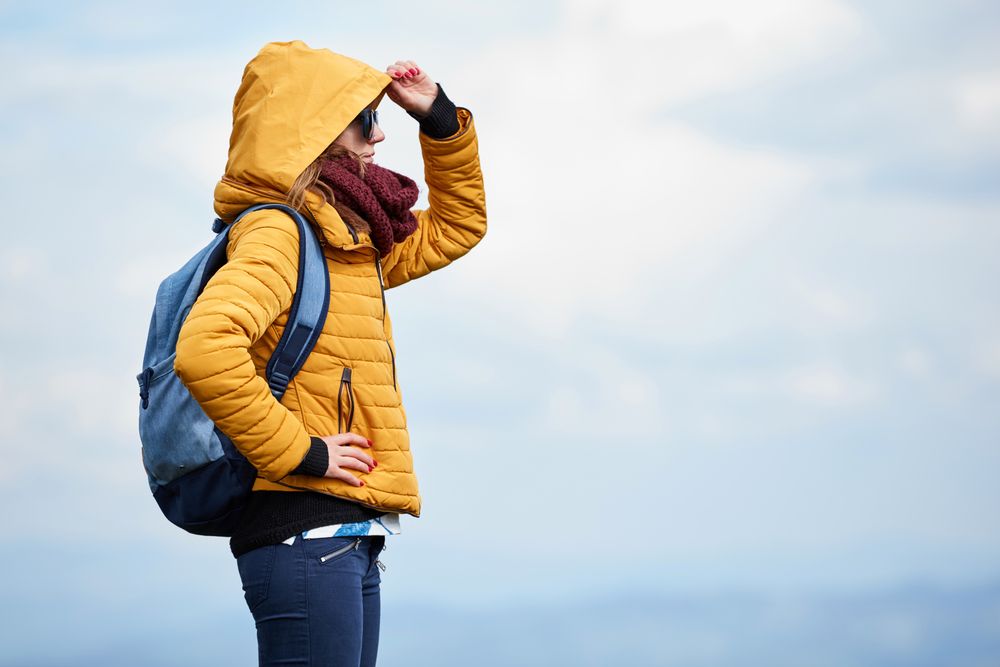Few things can dampen a hiking adventure faster than getting caught in the rain without the right gear. A good waterproof jacket isn’t just a luxury—it’s an essential piece of outdoor equipment that protects you from rain, wind, and even sudden temperature drops. But with so many types, features, and materials on the market, finding the right one can feel overwhelming.
This guide will walk you through everything you need to know about choosing the best waterproof jacket for hiking, ensuring you stay dry, comfortable, and ready for any adventure.
1. Understand the Difference Between Water-Resistant and Waterproof
Not all rain jackets offer the same level of protection.
Water-Resistant Jackets:
-
Designed to handle light rain or mist
-
Typically breathable and lightweight
-
Not suitable for prolonged exposure to heavy rain
Waterproof Jackets:
-
Fully block out rain even in torrential conditions
-
Feature special membranes or coatings (like Gore-Tex, eVent, or proprietary technologies)
-
Sealed seams and water-resistant zippers enhance protection
If you plan to hike in unpredictable weather or remote areas, a true waterproof jacket is a must. Always check product specifications carefully, as “water-resistant” and “waterproof” are often confused in marketing descriptions.
2. Learn About Waterproof Ratings
Many jackets list a waterproof rating measured in millimeters (mm), indicating how much water pressure the fabric can withstand before leaking.
General Waterproof Ratings:
-
5,000 mm–10,000 mm: Light rain, short periods
-
10,000 mm–15,000 mm: Moderate rain, typical day hikes
-
15,000 mm–20,000 mm: Heavy rain, extended exposure
-
20,000+ mm: Severe conditions, mountaineering expeditions
Higher ratings generally mean better protection but may sacrifice breathability. Consider your destination’s average weather conditions when making your choice.
3. Prioritize Breathability
Waterproof jackets should keep rain out and allow sweat to escape. Otherwise, you’ll end up soaked from the inside out—a miserable experience.
Breathability Ratings (measured in g/m²/24hrs):
-
5,000–10,000g: Suitable for low-output activities or casual hiking
-
10,000–20,000g: Ideal for moderate hiking and active pursuits
-
20,000+g: Best for high-output activities like trail running or alpine trekking
Look for jackets with breathable membranes and features like pit zips, mesh-lined pockets, and ventilation panels to stay dry inside and out.
4. Understand the Different Layers (2L, 2.5L, 3L)
Waterproof jackets come in different construction types, affecting durability, weight, and price.
2-Layer Jackets:
-
Outer shell + waterproof membrane
-
Softer and quieter
-
Good for casual hiking and light rain
2.5-Layer Jackets:
-
Outer shell + waterproof membrane + printed inner layer
-
Lightweight, packable, slightly less durable
-
Great for day hikes and fastpacking
3-Layer Jackets:
-
Outer fabric + waterproof membrane + inner liner fabric
-
Most durable and breathable
-
Best for frequent hikers and harsh weather
A 3-layer jacket will usually last longer and perform better in extreme conditions, making it a good long-term investment for serious hikers.
5. Choose the Right Fit and Cut
Comfort and mobility are key when hiking, especially when you’re wearing a backpack or layering clothes underneath.
Fit Tips:
-
Standard Fit: Room for base layers and mid-layers
-
Athletic Fit: Closer cut, better for agility but may restrict heavier layering
-
Length: Jackets should cover your hips and sometimes extend to mid-thigh for better rain protection
-
Hood: Should fit snugly around your head or helmet, adjustable with toggles at the sides and back
A poorly fitting jacket can create cold spots, limit mobility, and even allow rain to seep in, so it’s worth trying on a few styles.
6. Look for Critical Features
Not all waterproof jackets are created equally when it comes to features.
Essential Features Include:
-
Adjustable Hoods: Ensure full coverage without restricting vision
-
Storm Flaps and Waterproof Zippers: Keep water from seeping through zipper areas
-
Velcro Cuffs and Adjustable Hems: Seal out drafts and moisture
-
Pockets: Secure storage that’s accessible even with a backpack hip belt
-
Two-Way Zippers: Allow ventilation and easier movement during steep ascents
In harsh weather, these small design elements can make a major difference in your comfort and safety.
7. Consider Weight and Packability
Every ounce matters on the trail, especially for longer treks.
-
Ultralight Jackets (5–10 oz): Designed for minimalists and fastpackers
-
Midweight Jackets (10–16 oz): Balance protection, breathability, and durability
-
Heavyweight Jackets (16+ oz): Maximum weather protection, often at the cost of bulk and breathability
For most hikers, a midweight jacket offers the best combination of protection and versatility across seasons.
8. Focus on Material Durability
Fabric strength matters, especially if you’re bushwhacking, climbing, or carrying heavy packs that can wear on your jacket.
-
Ripstop Nylon: Lightweight yet strong, common in higher-end jackets
-
Face Fabric Denier (D) Rating: Higher deniers (e.g., 40D–70D) offer more abrasion resistance
-
Reinforced Shoulders/Elbows: Protect high-wear areas when carrying packs or scrambling on rocks
For rougher adventures, opt for a jacket with reinforced or thicker fabrics where it matters most.
9. Set a Realistic Budget
Waterproof jackets come in every price range, but quality matters more than a brand logo.
Typical Price Ranges:
-
Entry-Level ($80–$150): Suitable for casual hikers and occasional rain
-
Mid-Range ($150–$300): Better waterproofing, lighter materials, more features
-
Premium ($300+): Elite protection, best for serious backcountry users
Invest according to how often and where you hike. Spending a little more upfront often means greater long-term comfort and durability.
10. Check Brand Reputation and Warranty
When investing in gear, trust matters. Established outdoor brands have reputations for reliable waterproofing, thoughtful design, and customer support.
Trusted Brands Include:
-
Arc’teryx
-
Patagonia
-
The North Face
-
Outdoor Research
-
Black Diamond
-
Rab
-
Marmot
Also, check for warranty information. Some brands offer lifetime guarantees, which adds real value over time.
11. Pro Tips for Buying the Right Jacket
Here are a few final pro tips to help you make the best decision:
-
Test for packability: Make sure it compresses enough to fit into your daypack or hiking bag.
-
Mind the noise: Some jackets crinkle loudly; this can be annoying over long hikes.
-
Layer strategically: Buy slightly larger if you often wear thick mid-layers like puffy jackets or heavy fleece.
-
Practice zipper management: Test all zippers with gloves on if you plan to hike in cold weather.
-
Choose versatility: A lightweight 3-layer shell often works better across multiple seasons than heavy-duty models that feel too bulky for spring or summer hikes.
The best waterproof jacket isn’t just about surviving the rain—it’s about staying comfortable, confident, and free to enjoy every mile of your journey.



